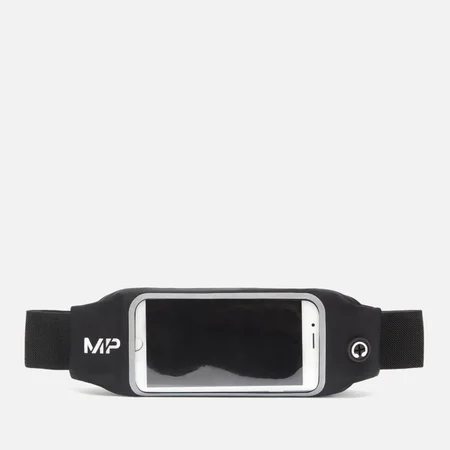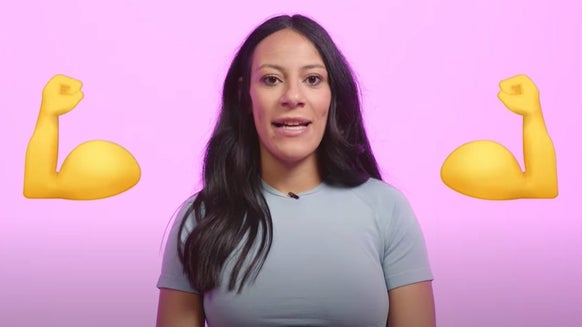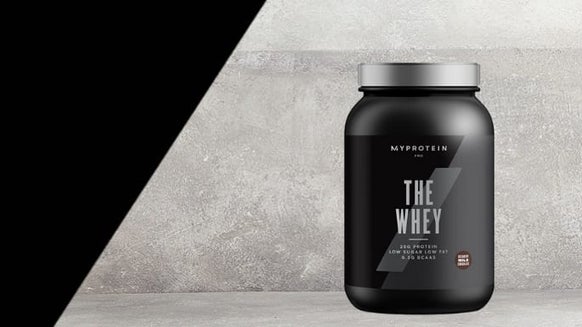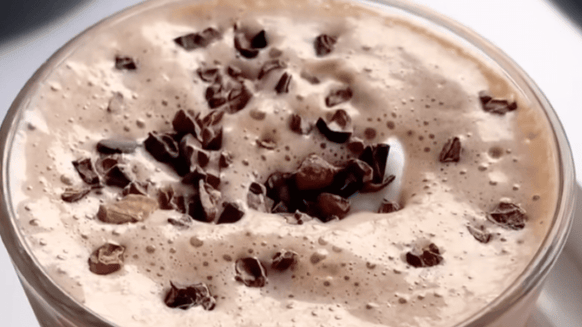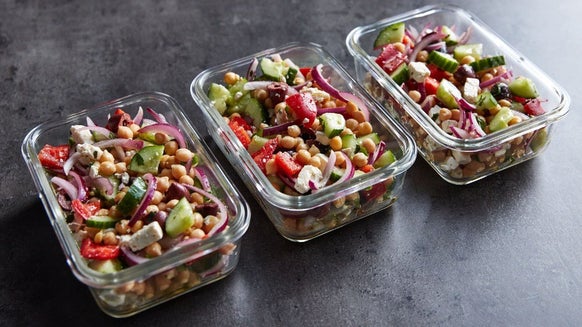Top Cardio Exercises at Home or the Gym | Cardiovascular Training

Cardio may not be everyone’s favorite exercise, but it is an essential part of a balanced fitness routine, with benefits ranging from burning calories to improving mood.
Plus, cardio doesn’t need to be half an hour on the treadmill — there are loads of different ways to get your heart rate up.
Here are some of the best cardio exercises you can do at home or in the gym to mix things up and improve your fitness.
The types of cardio workouts
When people think of cardio, they usually think of running and not much else. But there’s actually loads of choice when it comes to workouts. Even if you’re not a fan of jogging, there’s bound to be something for you.
High impact cardio
High-impact cardio are the exercises that put the most amount of stress on the body. It’s the cardio of choice if fat loss is your goal — as it’s one of the most effective ways to burn calories — but it can put a lot of stress on the joints.
High-impact cardio includes running, HIIT training such as interval circuits, plyometric training, and many sports.
Low impact cardio
Types of low-impact cardio include cycling, dancing, sports, and rowing.
No impact cardio
Kettlebell swings, swimming, and walking are all good examples of no-impact cardio.

6 benefits of cardio exercise
Even if you’re not cardio’s biggest fan, its many benefits are enough reason to include some form of it in your training program.
1. Improves cardiovascular health
Regular cardio is good for heart health. Just 30 minutes of low or no-impact cardio a day can contribute to improving your overall fitness.
2. Boosts mood and improves brain function
There’s nothing quite like a post-run high. Cardio’s a great way to boost feel-good chemicals in the brain and manage the body’s stress levels. Plus, it may even boost cognitive function.
3. Gets all of the body moving
Whether it’s a HIIT circuit or running, cardio is a great way to work out your whole body—working on both building physical and cardio strength as well as muscle endurance and stamina.
4. Builds stamina and endurance
In addition to improving aerobic fitness, cardio can also help build muscle endurance, meaning you can exercise for longer periods without getting tired.
5. Supports fat loss
If your goal is to lose weight, cardio’s one of the best ways to go about it, as it’s one of the most efficient ways to burn calories.
Plus, you may not even need to change your diet much either. A 2012 study looking at the effects of aerobic exercise without energy restriction showed clinically significant weight loss in participants over 10 months.1
6. You can do it anywhere
At home, at the gym, or in the park — there are so many choices when it comes to cardio training, and you don’t even need equipment.
How to get the most out of your cardio workouts
Now that you know the benefits, it’s time to plan your workout to make the most of every session. Here are some top tips to help:
Fuel your training
Cardio training depletes glycogen stores a lot faster than resistance training. The body then needs to turn to alternative energy stores, which is why cardio can be so good for fat loss.
That said, it’s still important to ensure you have enough stored energy to fuel your training. The more energy you have, the more intensely you will be able to exercise, which will burn more calories and be better for your overall fitness.
Prepare your body
One of the downsides of cardio is its repetitive nature can take its toll on the muscles and joints. This is why it’s important to take the time to properly warm up, cool down, and recover, so you can reduce the risk of injury and keep your body in tip-top condition.
Hydrate
You need to stay hydrated all of the time, but it’s particularly important when doing cardio. High-intensity workouts tend to make you sweat more, meaning you lose precious water. Staying on top of your hydration helps you to perform better for longer.
Change it up
It can be easy to fall into a routine with exercise and keep doing the same thing day in, day out. But as with all training programs, this won’t deliver results — you need to keep adding to your workouts to continue progressing. Switch up exercises, times, distances, and intensities to keep things interesting and carry on getting results.
Try fasted cardio
If you run first thing in the morning on an empty stomach, your glycogen stores will be depleted and the body will turn to fat sources as fuel sooner.
Have a plan and a goal
It’s a good idea to have a clear plan when starting out. Setting short, medium, and long-term goals can help keep things fresh and give you the best chance of meeting your goals.

The 7 best cardio exercises to do at the gym and at home
1. Running
Running is a simple and versatile form of cardio that's really effective at burning calories. There are loads of ways to do it, from long steady state runs like 5k, 10k and beyond, to short, sharp sprints.
2. Cycling
If running’s not your thing but you still like to get out and about, cycling is an excellent option. And don’t worry if you don’t own your own bike — most gyms have stationary bikes, which are great for some low-impact cardio. And if you want to increase the intensity, try a spin class.
3. Swimming
Swimming is a low to no-impact cardio exercise that can give you a great workout without putting much stress on your joints. It also requires you to use different strokes and is great for improving breathing techniques. Head to your local pool and put some lengths in.
4. Skipping
Skipping was so much fun during childhood. It never felt like a workout back then, but it’s actually a high-intensity cardio that’s great for warm-ups or as a full workout in of itself. There are loads of different speeds and rope types you can use, and it can be done at home, in the park, or in the gym.
Find out everything you need to know in ourskipping workouts guide.
5. HIIT
High impact and highly effective, HIIT is one of the best forms of cardio training, especially if you’re looking to burn calories and lose weight. There's an almost infinite range of exercises, circuits, and work-to-rest ratios to try, and it can be done at home with little to no equipment.
6. Walking
Walking is a low to no-impact form of cardio that’s great for your overall physical and mental health. Getting in 10,000 steps every day can really make a difference — and every step counts, whether it’s walking up the stairs at home or on the treadmill at the gym.
7. Sports
From rugby to rowing, sports are a fun way to get in some cardio. Plus, finding like-minded people can help keep you motivated.
Cardiovascular Training FAQs
Is 30 minutes of cardio a day enough?
30 minutes of cardio a day should be more than enough to keep you fit and healthy. But you can always do more than this to improve your fitness and burn more calories.
What cardio is the best for burning fat?
Cardio in general is great for burning fat. The more calories you burn, the higher your fat loss. Running and HIIT are two of the most efficient cardio workouts for burning calories.
Is pre-workout good for cardio?
A pre-workout supplement is good if you’re in need of a boost before an exercise session. Cardio is a high-demand training method, so a little pre-workout can go a long way to improving your performance.
What is a good cardio workout at home?
There are plenty of effective cardio exercises you can do at home — HIIT workouts are up there with the best, and exercise bikes are another way to burn calories without leaving the house.
And if you’re in the mood to venture outdoors but stay local, you can go for a run, cycle, or even a walk.
What are the most common cardio exercises?
Running is probably the most popular form of cardio, as it’s so easy to do and requires so little equipment. Cycling, swimming, and HIIT are also popular cardio workouts.
Which gym equipment can be used for cardio workouts?
Treadmills, stationary bikes, rowing machines, and steppers are all useful pieces of equipment for home cardio workouts. Free weights are also good for adding a little bit more intensity to your HIIT circuit and taking cardio to the next level.
Take Home Message
Cardio is a great way to stay fit and healthy, with benefits ranging from improving cardiovascular health to boosting brain function.
One of the best things about cardio is there are so many different forms of training you can try. You can run, cycle, walk, swim, and it can be as high or low-intensity as you wish.
READ THESE NEXT:

20 Expert Tips to Get The Most Out of Your Workout
Use these nutrition and wellness tips to get the most out of your workouts.

14 Resistance Band Workouts for Beginners
You won't be able to resist these exercises ...

The 10 Best Stretches for Running | A Runner’s Guide
Prevent injury with our PTs top stretches.


